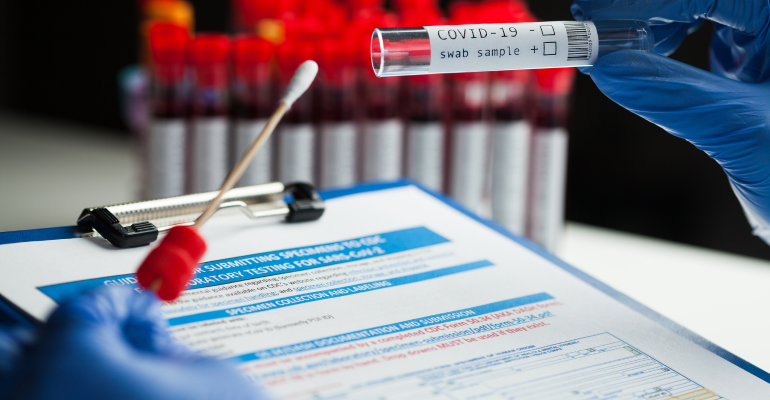During the current SARS-CoV-2 epidemic, public health professionals stressed the need of testing, identifying sick patients, and tracing their connections as an effective method for limiting the virus's transmission. In clinical, research, and public health laboratories, several diagnostic techniques for identifying the coronavirus have been described.
Indirect methods assess antibodies against the virus in a host that has been exposed, whereas direct tests identify the infection directly by detecting viral RNA. During a pandemic, a diagnostic test technique should have adequate sensitivity and accuracy to make appropriate clinical verdicts quickly.
The most frequently in use approach for direct SARS-CoV-2 diagnosis is nucleic acid amplification employing the reverse transcription polymerase chain reaction. To identify the virus, molecular detection methods analyse the nucleic acids contained in the sample. Real-time reverse transcriptase polymerase chain reaction is the commonly used laboratory detection method for the clinical diagnosis of COVID-19.
SARS-CoV and MERS-CoV, for example, have been diagnosed and monitored using the same approach. For the identification of SARS-CoV-2, a variety of commercially available primers, probes, and reagents are utilised in RT-PCR. A reagent is a substance or compound that can aid in the completion of a reaction, and it is used in various types of tests, such as pregnancy, blood glucose, and most COVID-19 test kits fall into this category and any chemical reaction requires the use of them.
How do reagents work?
Sample collection, primers and probes, fluorescence curve analysis, use of appropriate controls, and temperature control reliability are all factors that influence the RT-PCR test outcome. The positive control is used to examine the chemical integrity of the reagents, primers, and probes, while the negative control is used to check for sample cross-contamination.
Chemical reactions are triggered by reagents. Organic substances that trigger naturally occurring chains of reactions in the body, as well as inorganic substances that can be used in artificially triggered reactions, are included in this category. Reagents are commonly used to test for the presence of certain substances because their binding to the substance or other related substances causes certain reactions to occur. Various reagents are used to extract the virus or viral materials, others to amplify it, and still others to test for its presence.
A technique's outcome is influenced by sample collection process, reagents employed, cross-contamination risk, and sample/reagent storage requirements, in addition to the equipment and method itself. To assist in making an appropriate choice and timely public health actions, these criteria must be addressed when selecting an accurate and speedy diagnostic technique.
In addition to these controls, the US Centers for Disease Control and Prevention (CDC) advises using a human specimen control to verify effective lysis and integrity of extraction reagents, as well as to reduce false negative findings by collecting adequate human cellular material.
During the COVID-19 pandemic, there has been increasing worry regarding the inaccessibility of RNA-based diagnostic procedures, as well as a global reagent scarcity. However, like other types of reagents, those used to test COVID-19 are limited and subject to production and trade issues. This has become an issue in a pandemic setting, as previously laboratories and producers operated at a much lower capacity compared to the current need, and a reagent shortage has never been experienced on such a large scale.

